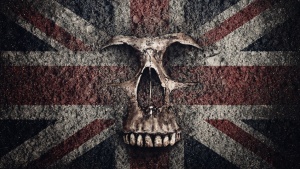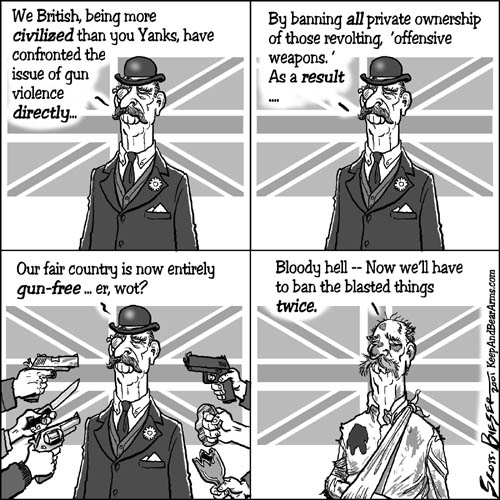UK murder statistics
As far as we’re concerned, depriving citizens of their fundamental right to self-defense is a repugnant act, regardless of the effect that it might have on violent crime rates. But since homicide statistics from the UK are so often wielded as pro-gun control weapons, it doesn’t hurt to take a look at those numbers, where they come from and what they really mean.
In the United States, crime statistics come from quite a few sources, but studies of nationwide trends generally focus on the numbers provided by the Federal Bureau of Investigation. The methodology used by the FBI is fairly straightforward: If there is a dead body and signs of foul play, it’s either a murder or a case of non-negligent manslaughter. Note that there is no distinction made between justified and unjustified killings. From a typical perspective, the FBI numbers are on the high side, because they include crimes of passion and self-defense shootings — in other words, quite a few deaths that are not legally considered murders.
Homicide stats for the United Kingdom have traditionally come from reports from the Home Office, which tallies murders according to a completely different system. The crucial methodological difference is that a murder’s existential status depends on a conviction, not a body and evidence of foul play. Think of how many murders go unsolved, and it will become clear that the Home Office’s numbers are woefully low. Not only that, but they are reported from the time of conviction, not the time of death. Since murder cases often take years to be resolved, statistics for a given year tend to reflect events actually occurring in previous years. For example, Home Office figures appear to indicate a massive spike in murders culminating in 2003; in actuality, this is the year in which the victims of prolific serial killer Harold Shipman — one of the most prolific serial killers in history, who murdered over 200 people throughout his long career — were reported.
It should be clear by now that any comparison between FBI murder rates for the United States and Home Office murder rates for the UK is utterly meaningless. The numbers are weighted in different directions, and the times do not line up. There are, of course, other sources for information about murder in the UK, but all of them are problematic. The Crime Survey, conducted by the Office for National Statistics, is based entirely on interviews with individuals, not on law enforcement data. There is no way to confirm the accuracy of any of the reports tallied, and the fact that the methodology has undergone multiple changes casts doubt on the accuracy of how the ONS tracks long-term trends.
It is anyone’s guess how far off the mark official reports of the British murder rate are. Using alternative methodologies, observers have predicted that the real rate is "double or higher[2]" than the reported rate, or even up to five times greater[3]. We will probably never know, but you should give no credence whatsoever to pundits who spout off about how much lower the murder rate is in the UK now that they’ve disarmed the populace.
Note that how murder rates in the UK and United States match up is not the only question worth asking. Without making any comparison to another country, we can inquire whether the UK murder rate fell after the 1997 ban on handguns. Even if the Home Office data is basically meaningless on a yearly basis, it might be possible to reconstruct macro-level trends by examining the data over the intervening decades. What we see[4] is a rather large increase in murders after the ban — even allowing for the false spike in 2003 — that only began to subside in conjunction with a nationwide expansion of police forces.When we look at the effects of gun policies meant to reduce crime, it is helpful to focus on areas that are experiencing higher levels of crime to begin with. Going by Metropolitan Police figures, the murder rate in London dipped momentarily, but then proceeded to reach its highest level yet; it has only begun to fall in the last few years, for reasons not linked to gun control. Strikingly, the reported rates of both gun-enabled and knife-enabled crime have both increased since the handgun ban. It’s not hard to imagine why: Any punk on the street can make easy money with the certainty that his victims won’t be armed.
It is difficult to make conclusive arguments about crime rates in the UK, but it can be said with confidence that anyone who confronts you with a "clear improvement" brought about by the country’s gun control program is either lying or naïve. What is certain is that, for those British citizens unfortunate enough to face a robbery or home invasion, there’s really not a lot to do except comply and hope for the best.
See also
Paul Gallant, Sherry Gallant, Alan J. Chwick and Jeanne D. Eisen. How Britain Cooks The Books.

